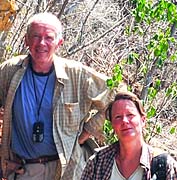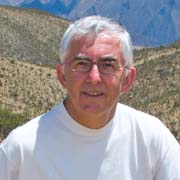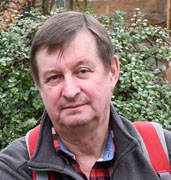Programme 12-13-14 September 2025
-
Day 1
-
Setting up stands
set-up of stands in the marquee and the hall (sellers only) -
Plant sales
-
Official opening
-
First lecture
Denis Diagre
Belgium

CITES and the contribution of amateur growers in the conservation of endangered cactus species (FR)
Biography
Denis Diagre-Vanderpelen was born in 1968. He is a specialist in the history of the natural sciences, senior researcher at the Meise Botanic Garden, CITES expert (Cactaceae), lecturer at the ULB (Université Libre de Bruxelles) and head of the Peyote Succulentophile Club (Brussels). My passion for cacti began very early on in my father's greenhouse. That's how I got to know the 3LKs in Houthalen in the years before CITES came into force in Belgium. After two decades of keen interest in Chilean and Andean cacti (5 trips), I ‘discovered’ the genera of the Southwest of the United States (11 trips). My research focuses on the history of nature conservation, and more specifically that of the Cactaceae.
Protecting the Cactaceae: the history and current situation of an initiative
This talk will look at the awakening of an ‘ecological conscience’ in the world of cactophily/cactology, two fields that have not always been easy to distinguish. I will quickly sketch a portrait of the carefree passion of the men in the field supplying the major importers, followed by the rather belated doubts about the harmlessness of these practices. I will also look at the various legal and other measures taken to counter the harmful effects of reckless collecting, right up to the implementation of CITES and the debates it still provokes today.
-
Cafeteria
Social gathering
-
Day 2
-
Plant sales
-
Second lecture
Julia Etter & Martin Kristen
Germany

The most beautiful Agaves in the world - a selection (DE)
Biography
Originally from Switzerland and Austria, they have been travelling in the field since 1997 to document plants for their two websites www.agavaceae.com and www.crassulaceae.com. They settled in the state of Jalisco, Mexico, 20 years ago. They maintain a large garden with a variety of agaves, cacti and other succulents, cultivate Crassulaceae and offspring for the garden in their greenhouse, are currently designing an agave display garden for a tequila factory, and care for a large flock of chickens and seven cats. In addition, as independent field researchers for UNAM and the Universidad de Guadalajara, they are always on the lookout for new plants. Agave kristenii, Echeveria juliana, E. kristenii, Graptopetalum kristenii, and Sedum kristenii are named after them. Their photographs and articles have been widely published in magazines, books and on the internet.
Agaves
We want to present the most beautiful agaves from the USA, Mexico, Cuba and Colombia, i.e. our personal favourite agaves with a focus on Mexico. Of course, this is a very subjective selection and so that it doesn't become too monotonous we will also show some pictures of the succulent accompanying flora.
-
Third Lecture
Martin Lowry
United Kingdom

Bolivia (EN)
Biography
I have been growing cacti for nearly 50 years. Like most newly entranced collectors I started with a general collection but very quickly realised that I would have to specialize or run out of space. I did both! Eventually my interest gravitated towards South American Andean cacti and I accumulated a huge collection of Lobivia which of course expanded into Echinopsis and Trichocereus. Intrigued by the plethora of names I decided it was time to see the plants in their natural environment and visited Bolivia for the first time in December 1996. Discovering the magnitude of natural variation between individuals and populations there is what finally turned me into a “lumper”. In 2001 I attended an IOS meeting and was subsequently invited to participate in discussions for the preparation of The New Cactus Lexicon. Meeting luminaries of the cactus world and listening to their opinions on taxonomy eventually rubbed-off on me and gave me an environment in which I could express my own ideas. Until now I have made a total of 15 trips to Bolivia, each time finding something a little different. This has resulted in the description of one new genus, several new species and various other contributions to the taxonomy of Cactaceae.
Bolivia
The talk I will present covers a short history of the genus Lobivia, an overview of the species and their distribution in Bolivia, all illustrated by photos taken in habitat and in cultivation. Why Bolivia? Well, Bolivia is home to more species of Lobivia than any other South American country and provides an excellent introduction to their variation and diversity. It is, of course, also a very exciting and beautiful country in which to travel.
-
Fourth lecture
Jan Vandorpe
Belgium

Gasteria (NE)
Biography
I inherited the love for succulents from my grandfather who grew pretty red epiphyllums in his veranda. And from the the cactus craze in the 80's, my windowsill was full with cacti and succulents. When I went to Swaziland as a teacher, I arrived in a true succulent heaven. Why collect plants when Aloe, Haworthia, Cotyledon and Gasteria grew all around me? Back in Belgium a greenhouse quickly filled itself with succulents in a few years time. Thirty years later cacti have relatively decreased in number, in favour of South-African succulents which took over the space and of which Gasteria are Queen.
Gasteria
Gasteria used to live under the table, they seemed the losers in the greenhouse. Nowadays they are more appreciated and given a better place. It is the simplicity and symmetry of leaf and flower that attracts people, their simple beauty. They have been cultivated in Europe since the 18th century, they grow slowly and do not require much care. We take a journey through the world of Gasteria, we see where they grow, how to recognise them, what to do and what not to do. Do you already have a Gasteria? It won't be long after this lecture.
-
Cafeteria
Social gathering
-
Day 3
-
Plant sales, free entry